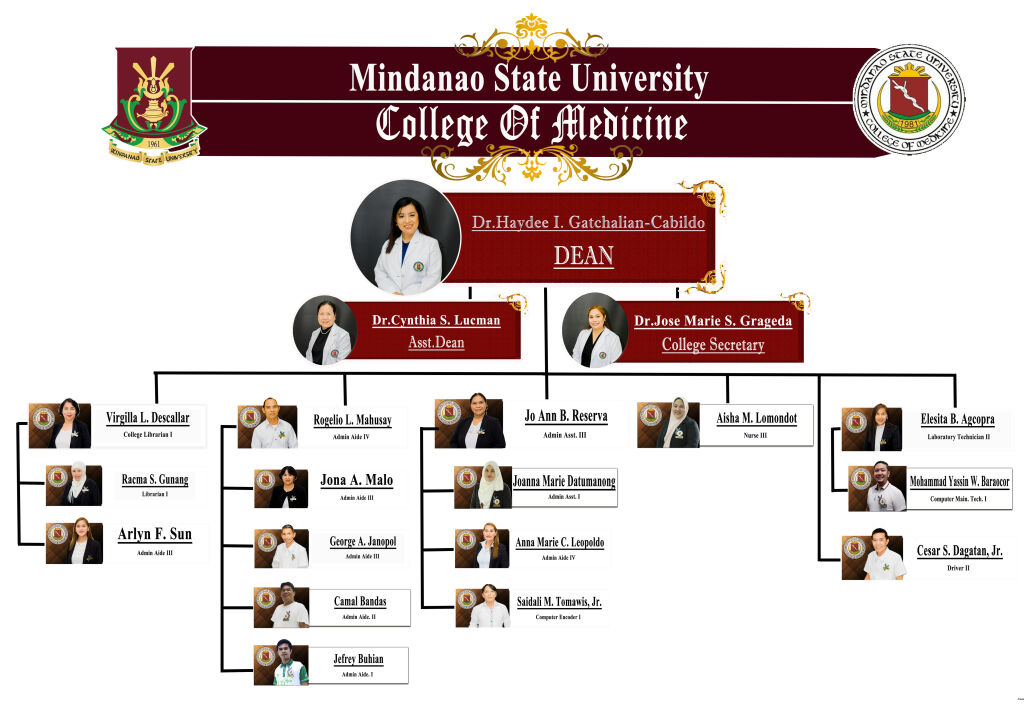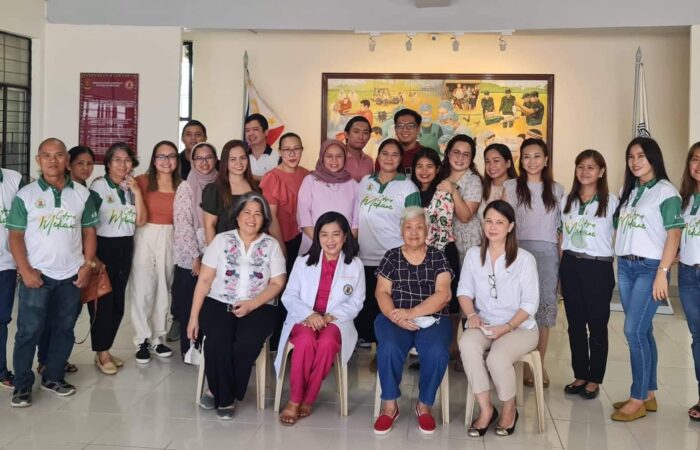———-HISTORY——-
The MSU College of Medicine was first conceptualized during the administration of the late MSU President Mohammad Ali Dimaporo.
The objective was to establish a medical school that would provide opportunities for the Muslim students and the poor but deserving students of the cultural minorities to become competent physicians with a heart to serve the medically depressed areas of Mindanao, Sulu and Palawan Dr. Ombra A. Tamano was tasked to set up the College and became the first dean of the College.
In June 1984, the College opened its doors to first batch of 25 students and Dr.Tamano , together with some medical practitioners from Mindanao and even the Visayas, enthusiastically responded to the call of teaching the students the different disciplines in both basic and clinical sciences. They started holding classes at Omairah Hospital in Marawi City.
In June 1986, Dr. Angelo H. Manalo was commission to set up the clinical training program of the college in Iligan City. The Commission on Medical Education, as authorized by the Board of Medical Education, evaluated the college and reported that it had substandard curriculum and facilities, and lacked faculty members due to limited financial support from the government. It was then recommended that the college be phased out and that there would be no admission of first year applicants for the following academic year.
In the March 1988, MSU-COM graduated its first batch of 13(out of original 25) students. The college was also revisited and re-evaluated by an inspection team headed by the APMC Executive Director Dr. Elena Ines-Cuyegkeng. The team decided to give the college a second chance, with the following stipulation: (1) it must be
transferred from Marawi City to Iligan City, (2) it must be in academic institution like MSU-IIT, and (3) its curriculum must make the shift from traditional to innovative, specifically community based.
In August 1989, the 1st batch of MSU-COM medical graduates earned an 80% passing rate in the Physician’s Licensure Examination (PLE), a rating that was far above the national passing average. The 2nd batch of MSU-COM graduates made a 100% passing rate in the August 1990 PLE.
In 1991, Dr. Angelo H. Manalo, who was mainly responsible for the development of the community-based curriculum, was installed as the 2nd dean of the college. Through an ECFMG scholarship grant, he spent 3 months at the Bowman Gray School of Medicine of the Wake Forest University at Winston-Salem, North Carolina where he was exposed to the Problem-Based Learning (PBL) methodology. Upon his augment the community-based curriculum of the college with the PBL method, thus making the shift from the more traditional approach of teacher-centered lectures to the student-centered, small group PBL sessions.
In June 1994, PBL was integrated to the 1st year class and by the country to have a fully implemented PBL methodology.
A robust curriculum covering foundational sciences, clinical skills, and professional development is a hallmark of esteemed medical education institutions. This includes classroom learning, hands-on training, and clinical rotations.
Well-equipped laboratories, simulation centers like mannequin, and teaching hospitals are essential components of a modern medical school, providing students with access to the latest technologies and clinical environments.



